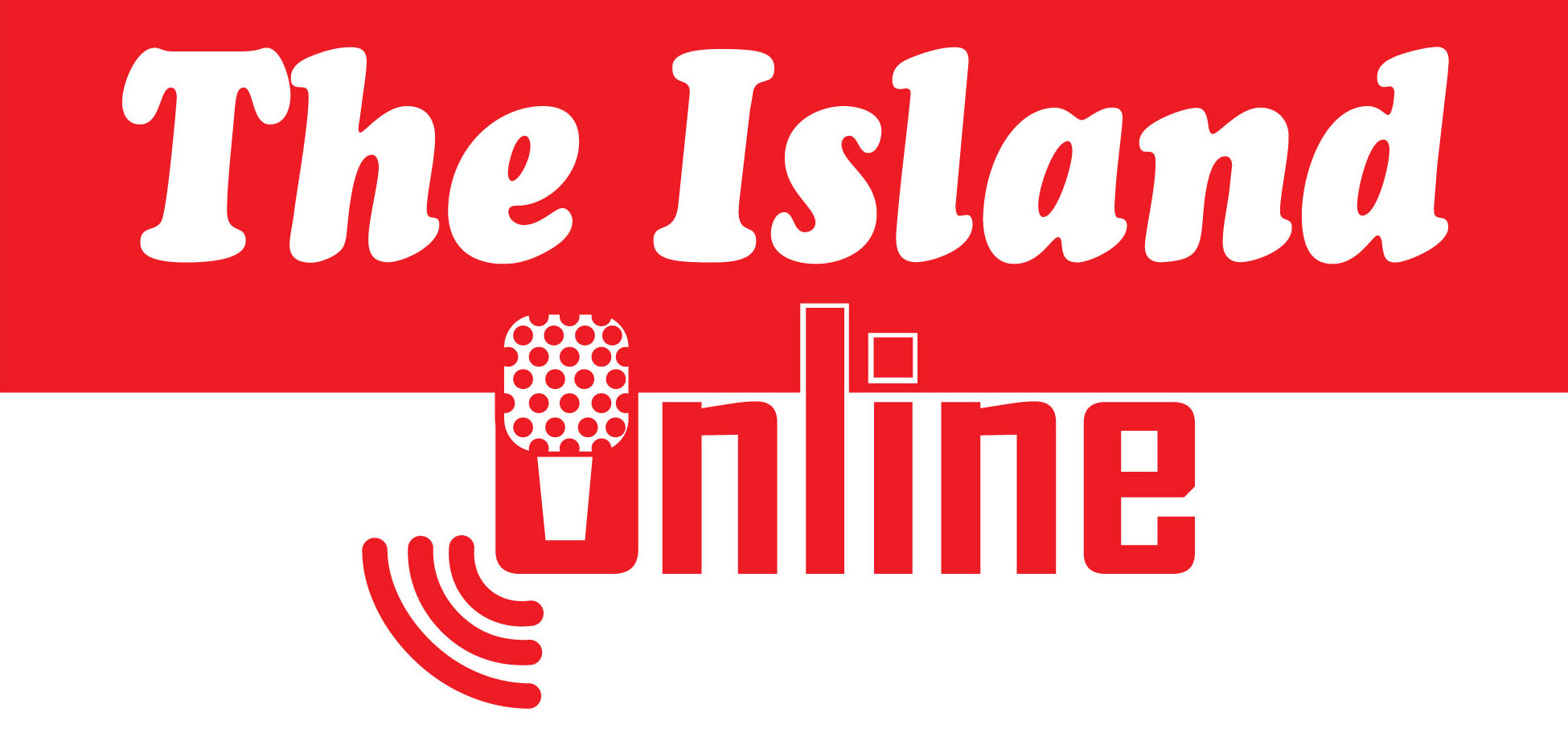Features
Chinese commemorative coins; loud mouths banished to the wilderness; devoted couple – a rarity
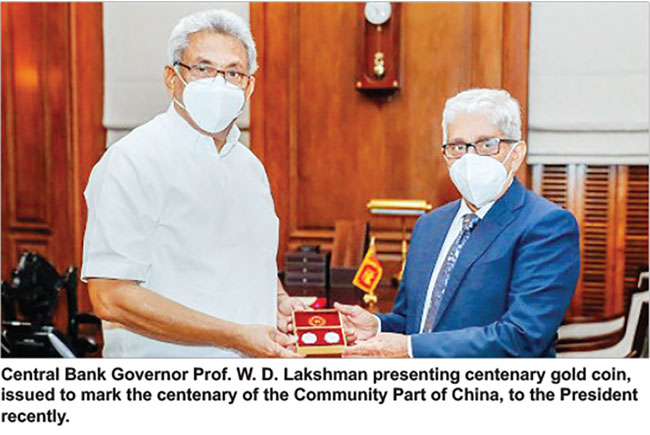
Cass is ignorant of country finances and money matters though she read economics and got to know Adam Smith and Bretton Woods: passé now in this new world of offshore banking smudging out the black market and Bitcoin as digital currency or crypto currency created in 2009. That’s beside bonds! However, she got a shock when she heard on a TV programme that the Central Bank of Free Sri Lanka printed coins in celebration of 100 years of the Chinese revolution when Leader Mao Zedong is supposed to have been limo driven behind (or in front, but out of sight) of the Long March of Chinese peasantry with many dying of starvation and fatigue en route.
Now why are we, for goodness sake, celebrating the centenary of Chinese political party, even minting commemorative coins to celebrate with the Chinese? Are we already two nations under one government, soon to be a colony of the Big Country to be governed by its Leader for Life, Xi Jinping? Admittedly China is Asia, and Asians for Asians. But we have other friends whom we trade with who buy more of our stuff than China ever will. Much thought and effort were first taken at the Bandung Conference with Nehru and our own Kotelawala defying Nehru, but together with others, declared we were non-aligned. The diplomatically middle path following group of  countries grew stronger and we had leaders and diplomats of caliber, the last being Kadirgamar who maintained us on an even keel, not aligned to any one country or bloc. Now money has bought us over – the Chinese yuan I mean.
countries grew stronger and we had leaders and diplomats of caliber, the last being Kadirgamar who maintained us on an even keel, not aligned to any one country or bloc. Now money has bought us over – the Chinese yuan I mean.
So, I asked an ex-banker about the minting of coins to celebrate another country’s political party’s anniversary. He said he was not up with info; he seems to have given up following local news. Hence, I googled and came across a news item that made the matter fairly clear. “Sri Lanka will be issuing a special coin to commemorate a foreign political party, the Communist Party of China (CPC) in view of its centenary celebrations.” The news item added it was an unprecedented move. The article continues thus: “It is also learnt that there was also a possibility that China may have minted the coins and handed them free to the Central Bank of Sri Lanka and other friendly countries as a goodwill gesture for the centenary celebration… The C B began on Monday (28/6?) to issue a set of coins … three gold each weighing 8 grams; five in silver and one copper alloy coin.”
All very unclear; purposely shrouded in secrecy? One would love to know the other countries favoured by China – Pakistan?No; India? Definitely not! May be a few banana republics of Africa, like us fully with China, gifting the Chinese ‘open sesame’ welcomes. We invite and accommodate their labourers (in Tissamaharama for instance, whether labourer or Red Army soldier) and permit Chinese projects to bring in prisoners, it is said, as labourers. We are so servile that we bend over backwards to sell our precious assets to them, mostly in the way of land – most valuable bits – all over the country. Only a small step left to be a colony of theirs.
I mulled over this as I went for my daily walk and who do I meet – two Chinese men in two spots on my path – looking very much proprietors. They will be brought here, settle down and get women pregnant and thus colonialism in a subtler way than by gun or signed treaty. A railway was built from Shanghai to Llasa and immense trouble taken to submerge and finally erase Tibetan culture inclusive of Tibetan Buddhism. Here in this Paradise Island, we invite them to take us over; for filthy lucre which either goes into the common kitty or private pockets. That is anyone’s guess.
Silenced loud voices
Oh, where oh where are the strident tones of Gaman and Weera and croak of Vasu? Banished to the wilderness and mouths taped? We’ve heard new shouts from several, one being the oversized MP, state minister of something who got jammed in a moving device up a coconut tree. They shout in unison for Basil to enter Parliament. He will do so, or has already done so when you read Cass on Friday and we Ordinaries can enjoy fuel at reduced prices, a stunning blow given the skyrocketing COL and back to hunky dory. Hope he doesn’t suddenly go back ‘home’.
Modesty eloped with decency
Model and what else Piumi Hansamali was front paged in The Island of Monday 5 July. OK. But ole conservative Cass believes she should have worn a more covering garment or thrown a shawl across her shoulder in a photograph to appear in a respected newspaper for all to see, not revealing assets until the depths of her décolleté. Her emphasized-with-border plunging neckline would suit a C19 rule defying wild party at the Shangri La. Not suitable at all for public display. Hansamali may like it but we Ordinaries still have at least traces of our traditional lajja.
Wonderful couple
Peanut farmer turned Prez of the US – Jimmy Carter (96) – and wife Rosalyn (93) celebrates this week their 75th wedding anniversary. What an achievement. The union was a very committed, steady and loving one with Carter depending on his wife’s advice even when Prez. Rick Rojas writing in the New York Times comments: “Their partnership has withstood the glare of political campaigns and the strains of raising a family, triumphs that catapulted them to international prominence and a defeat that sent them home to Georgia as political outcasts with a faltering family business. As their world inevitably narrows in the dusk of life the couple has come to rely on their bond even more. ‘We’ve just grown closer and closer together’, said Carter.”
Their families were close neighbours in Plains and Carter first met the adult girl, a friend of his sister, on a blind date. He proposed soon enough but she refused as her father had decreed marriage follows her successful higher education. The wonder (yes, it is a wonder these days) of their lasting marriage, in Cass’s opinion, is owing to their commitment to each other and humanity in general. They both worked hands on in building Habitat for Humanity houses; even after Carter recovered from cancer. While he is full of humanity, she is all faithfulness, he being the only man who has ever kissed her. He was not a great Prez (1977-81), but was uncontroversial though coming as a complete outsider to Washington DC. She first mooted better care of the mentally disturbed. It is sad to note that of all succeeding Presidents and Democrats, only Biden and wife visited the Carters. For Cass’ great good luck she was able to see and hear her best American Prez conduct Sunday School at the Marathana Baptist Church in Plains in 2008. Photographing with the couple was permitted after the service with the strict order of No talking, not even thanking. But Carter spoke to Cass wishing her country Sri Lanka success after the travails of the civil war.
Successful marriages as seen, noted and recorded along the grape wine of gossip about our topmost couples seem slight. Definitely JRJ and Elena are in: devoted and apparently loving. The present Prez too is blessed with a Missus that the public approves of completely.
Features
From micro to macro development
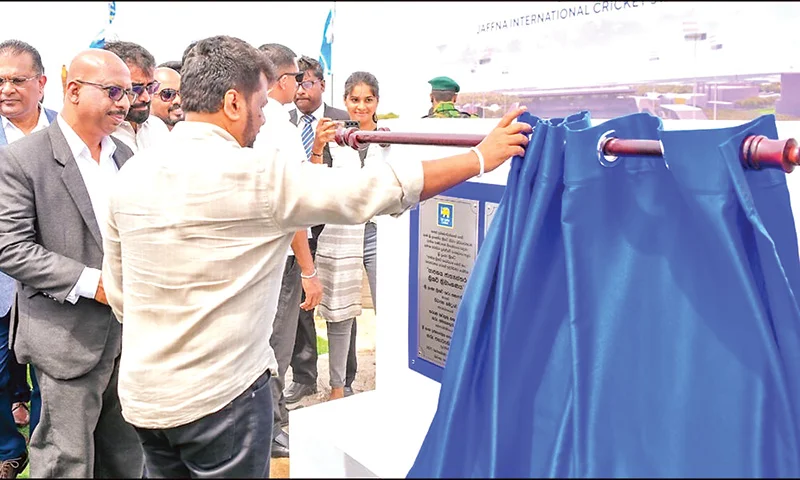
The government is investing its time and money in northern development in a way that no previous government has in a long while. The topmost leaders of the government no less, President Anura Kumara Dissanayake, and Leader of the House Bimal Rathnayake, have been spending a great deal of their time and effort in the North. During their visits they meet face to face with persons from different walks of life and launch new development projects that will benefit the people. These face-to-face engagements signify not only physical connectivity but the rebuilding of trust between the government and the people of this once war-torn area of the country. Last week Minister Rathnayake was in Jaffna to launch the widening of the access road to the Kurikadduwan Jetty, which is launching point of ferries (boats) that take passengers to the small islands off Jaffna.
Minister Rathnayake announced that the development of the access road to the Kurikadduwan Jetty has officially begun, marking a major step forward in improving connectivity to the islands off the Jaffna peninsula. The most significant of these islands is undoubtedly Nainativu, which is popularly known today as Nagadipa. Traditions has it that Nagadipa was one of the three sites that Lord Buddha visited in Sri Lanka during his sojourn in this world which makes it one of the most sacred religious sites for Buddhists. Thousands of pilgrims from the rest of the country visit Nagadipa every day with the numbers soaring on the long weekends. The improvement of the access road from Jaffna to Kurikadduwan will help to save the time of these pilgrims. Such promotion of local-level tourism can be the seed of revival. Speaking at the event in Jaffna, Minister Rathnayake emphasised that this development will also greatly ease transportation difficulties faced by residents and officials on the surrounding islands, including teachers and government employees who rely on boats for daily travel.
At the present time, passengers who use the ferry system have to experience considerable hardship such as standing in the hot sun without shade, and with no system of ensuring that they stand in line, so that they jostle each other to get to the front nearest to the boarding place to the ferries. Sometimes when there is a dearth of ferries, the people who are awaiting them get anxious and restive. The government officers on duty at the boarding point are understanding of the plight of the passengers, and tend to let them all board the available ferry which makes the crowding inside the ferry unbearable. But the passengers have to bear with the hardship.
Micro Changes
A future phase of the development of the ferry system at Kurikadduwan would, therefore, necessarily involve upgrading the quality of the ferries themselves. The government-run ferry is one that is meant for passengers, but the private ones are no better than fishing boats where most passengers either stand or sit on the top of the deck. It is important that the government authorities at the jetty should regulate the numbers who could board a ferry to ensure that it is not overloaded and also ensure that every passenger is provided with a life jacket which is not the case at present.
At the opening of the access road to Kurikadduwan, Minister Rathnayake repeated the government’s consistent pledge that will treat all people, regardless of ethnicity, religion or region, equally and give them equal opportunities for development. It is due to this promise made by the government at the previously held elections, that the people of the North (and indeed elsewhere in the country as well) gave the NPP an unprecedented mandate, and one never before given to any other mainstream political party in the North of the country. In developing the national economy, the government also needs to widen its horizons from the micro to the macro level. This applies at the regional level as well.
It needs to be noted that the population of the largest of these islands, Delft, to which the government is committed on integrating with the larger Sri Lankan economy, is only around 5,000 today. It was more than double this prior to the war. However, hundreds of tourists, mainly local tourists, visit the island to see the famous wild ponies of Delft, the descendants of the horses, left behind by the Dutch who established a fort and military garrison on the island when they ruled parts of Sri Lanka in the 17th and 18th centuries. Next year the government plans to develop the Kurikadduwan Jetty itself as it is, at present, in an underdeveloped condition with a minimum of facilities for those who come to travel on the ferries. However, there needs to be consideration of boosting the economy by making use of potential linkages between the region with larger markets such as provided by the rapidly prospering economy in next door India.
Macro Changes
The stakes are high where the development of the North and East of the country is concerned. At the present time, the younger people in the North and East, where the war once raged, are frustrated by the lack of employment opportunities and are constantly on the look out to leave their homes and come to Colombo, or to go abroad and work. Therefore, the government needs to do its utmost to boost up the development of the North which will also feed into the national economy. For decades, the North in particular but also the East were seen as a burden to be managed or a problem to be contained, especially in the context of the ethnic conflict and war. Today, the North and East of the country need to be seen as a part of the larger whole to be opened and joined with the world. Just as Kurikadduwan connects the mainland to the islands, Kankesanthurai can connect Sri Lanka to India.
The government needs to build on the constructive achievements of the past and think big without being haunted by the problems and conflicts of the past. A special area for development would be to expand the interconnection between the northern port of Kankesanthurai and the south of India, just as much as the government is expanding the interconnection between the mainland of Sri Lanka and its small islands. Previous governments entered into agreements with India to take forward the Kankesanthurai Port project and improve the ferry service between Sri Lanka and India. The Kankesanthurai Port was first targeted for revival in 2017 when Prime Minister Ranil Wickremesinghe and Prime Minister Modi of India entered into an agreement in which India agreed to extend a Line of Credit to rehabilitate the harbour which had been silted and rendered unusable during the war. Again in 2019, under President Gotabaya Rajapaksa both governments agreed to explore expanding Kankesanthurai into a functional passenger and freight terminal linking directly with Nagapattinam in Tamil Nadu.
Therefore, the framework for a fully operational trade and tourism linkage through Kankesanthurai already exists. It must be kept in mind that Sri Lanka cannot depend solely on internal circulation of people and goods if it is to grow beyond its current constraints. The road to Kurikadduwan may shorten the time of travel between Jaffna and Nagadipa, but the channel through Kankesanthurai can shorten the distance between Sri Lanka and India, and through India to the wider world. To remain inward is to remain small. To connect outward is to become significant. The success of the North, and, indeed, of the whole country, will depend on whether we extend the connectivity within the country to the external world.
by Jehan Perera
Features
THE ROAD TO GAZA – I
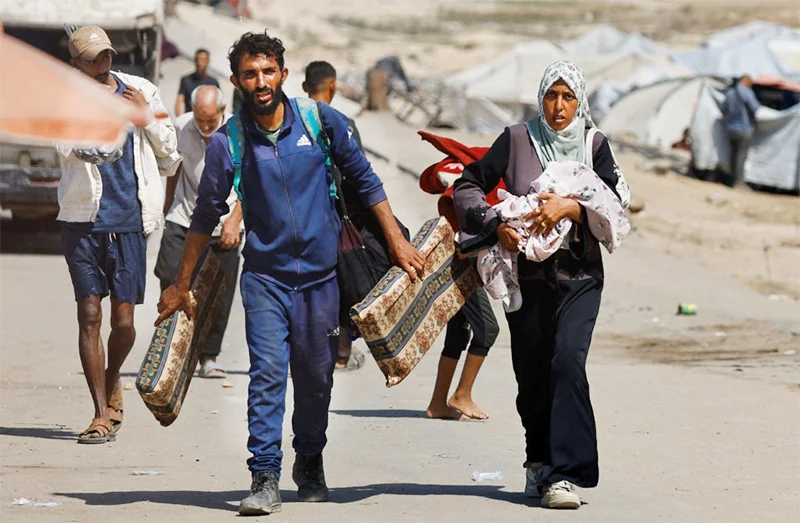
On October 7th it will be two years since the commencement of the Gaza War
The World After Gaza by
Pankkaj Mishra (Fern Press, London) 2025
Pankkaj Mishra FRSL has authored Age of Anger and From the Ruins of Empire and writes political and literary essays in The Guardian, the London Review of Books and The New Yorker.
“We too are so dazzled by power and money that we forget the fragility of our existence; we forget that we are all in the Ghetto, that the Ghetto is fenced in, that outside the fence are the Lords of Death, and a little way off the train is waiting,” Primo Levi Jewish Italian partisan, Holocaust survivor and writer.
The prologue to this book deals with the death of the Warsaw Ghetto during the Second World War. The Ghetto was progressively depleted as the inhabitants were being shipped to extermination camps. Finally in April 1943 a couple of hundred young Polish Jews grabbed whatever arms and weapons they could lay their hands on and took on the Nazis.
“After a few desperate weeks” explains Pankkaj Mishra, “the resisters were overwhelmed. Most of them killed. Some still alive on the last day committed suicide in the command bunker. As the Nazis pumped gas into it a few managed to escape through sewer pipes. German soldiers then burnt the Ghetto, block by block, using flame throwers to smoke out the survivors. The Polish poet Czeslaw Milosz recalls hearing screams from the Ghetto: They were the screams of people being murdered.
“Living in Berkley California while the US military bombed and killed hundreds of thousands of Vietnamese, an atrocity he compared to the crimes of Hitler and Stalin, Milosz again knew shameful complicity in extreme barbarity: ‘If we are capable of compassion and at the same time are powerless,’ he wrote, ‘then we live in a state of desperate exasperation.’”
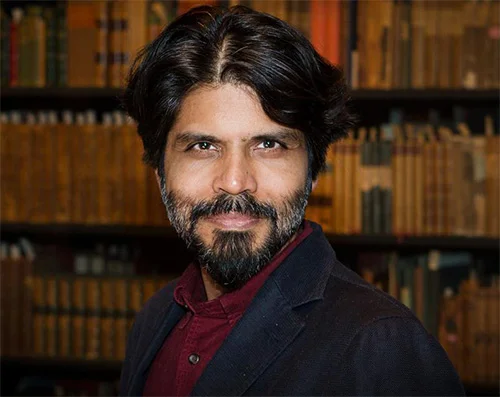
Mishra
Mishra goes on to explain that several generations of Jews were scarred by the Shoah (the Hebrew term for the Holocaust, the genocide of European Jews by Nazi Germany) and to them the unexpected attack on 7 October 2023 in Gaza by Hamas reinforced the spectre of the Holocaust. But he also grapples with the paradox of post-October Seventh.
In Gaza it is the Palestinians: Muslims, Christians and Agnostics who in the words of Irishman Blinne Ni Ghralaigh representing South Africa, would tell the International Court of Justice in The Hague, were “broadcasting their own destruction in real time in the desperate hope that the world might do something!”
Long before the Shoah the Germans had participated in ‘crushing the Yellow Peril’ during the 1899-1901 Boxer Rebellion. Under General Lothar von Trotha, the Imperial German Army had been used first against Chinese. And in 1904 in Namibia (then German South-West Africa), once again under von Trotha they murdered sixty-five thousand Herero out of a population of about eighty thousand. This was followed in 1905-07 in German East Africa (now Tanzania) where a rebellion by the Africans resulted in eighty thousand deaths, many executed by machine gun fire while two hundred thousand perished in the resulting famine.
The Allied Powers did not go to war against the Axis Powers in September 1939 to liberate the European Jews who were persecuted and finally sent to their deaths in gas chambers at the concentration camps. Anti-Semitism as state policy began much earlier in 1933 when the Nazi Party was elected to office in Germany and then spread across Europe. Hence throughout that period Jews were trying to escape their countries of origin in Continental Europe. “But neither the American State Department nor the British Foreign Office wished to rescue them (instead they) worked to avoid a situation in which Germany and its allies would force out tens of thousands of Jews into Allied hands.”
Kristallnacht
On the night of 9 November 1938 known as Kristallnacht, at the behest of the Nazi Party, across Germany and Austria, Jewish homes, businesses and synagogues were systematically attacked and Jews killed. In the wake of Kristallnacht then British Prime Minister Neville Chamberlain in a letter to his sister wrote that “no doubt Jews aren’t a lovable people; I don’t care about them myself, but that is not sufficient to explain the Pogrom.” The London Observer meanwhile cautioned: If a further accretion of say hundred thousand Jewish refugees come into the country, how could the danger be averted of an anti-Jewish feeling here? In 1940 “British authorities in Palestine deported fifteen hundred Jews, half of them women and children, to Mauritius.” Jewish immigration to the US had already been limited in 1924, but even as late as 1939 Charles Lindbergh thought “there are too many in places like New York already.”
Immortalised in the 1976 motion picture Voyage of the Damned, is the tragic true story of how in May 1939 nine hundred mostly Jewish refugees from Germany attempt to flee to Cuba, the USA or Canada. But none of these countries would accept the refugees and the ship returned with all its passengers to Europe where many of the Jews would end in death camps.
But the plight of the Jews only got worse. “White supremacists in the US State Department ensured as David Wyman records in The Abandonment of the Jews (1984) that “only 21,000 refugees were allowed to enter the US during the years it was at war (with Germany) only ten percent of the number who could have been legally admitted under immigration quotas.”
In a 1941 letter to an American friend who personally knew President Roosevelt, Otto Frank father of Anne explained “the US is the only country we can go to.” Hiram Bingham a US diplomat in Marseilles managed in the late 1930s to get Hannah Arndt and other Jewish intellectuals out of France before he was forced to resign by his State Department superiors.
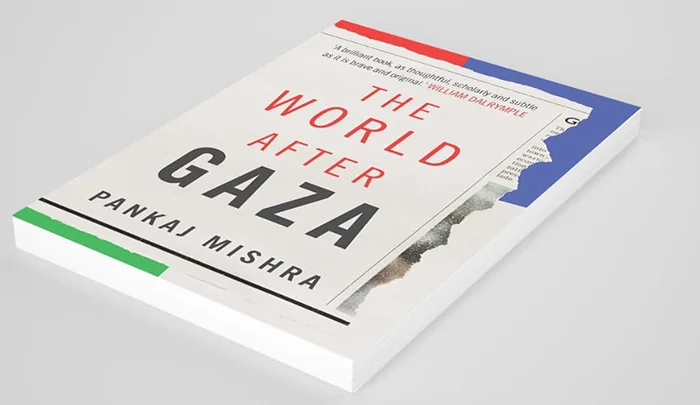
The Shoah did not end with the surrender of Nazi Germany in May 1945.”In 1946 in Kielce 180km from Warsaw a Polish mob killed 40 out of the 200 Jews who returned. Britain too was cautious about receiving Jewish survivors, like Blacks from the West Indies they were only accepted if they were “of good human stock!”
“Jews have been prominent figures in the Western Internationalist Left that emerged after the Russian Revolution and distinguished itself through a valiant losing battle against fascism in Spain. Socialism offered Jews not only integration and acceptance within their (European) societies, but also a likely role in shaping their future. Thus Jews came to be disproportionately represented in left wing parties, noticeably in Soviet Russia.”
Not only Karl Marx but Eduard Bernstein in Germany, Rosa Luxembourg in Poland, Bela Kun in Hungary, Kurt Eisner in Bavaria and Leon Trotsky in Russia had dominated revolutionary politics in Europe. Jews like Martov, Dan, Radek, Zinoviev and Trotsky were conspicuous in the Russian Revolutions of 1905 and 1917. “Zionist settlers from Europe brought with them to Palestine socialistic ideas of collective farming, trade unions and economic planning.” The kibbutz a communal settlement, engaging in agriculture and other activities, was first introduced by European Jews in 1910 at Degania in Palestine.
In 1947 Stalin crucially supported, together with Belorussia, Ukraine, Poland and Czechoslovakia and the Communist Parties in UK and Italy, the UN plan for partitioning Palestine and creating a Jewish State. “The Soviet Union also armed the Zionists, enabling the expulsion of 750,000 Palestinians in 1948 remembered as the Nakba (catastrophe).”
Radical intellectuals in western Europe and north America like Jean-Paul Sartre and Martin Luther King also viewed Israel through sympathetic eyes; but this enthusiasm waned after the 1967 War.
On the other hand Dan Stone in The Liberation of the Camps (2015) records how British Diplomats were cautious about accepting Jewish survivors at the end of World War II citing the danger of ‘Judeo-Bolshevism.’ Unattributed quotations taken from MISHRA, Pankkaj The World After Gaza (2025) Fern Press, London
By Jayantha Somasundaram
Features
The Evolving Role of Life Insurance in Sri Lanka

“One undeniable truth we all face is the uncertainty of life. In a world where change is constant and the future unpredictable, the need for financial security and empowerment has become more essential than ever,” says Senath Jayatilake, Chief Executive Officer of Union Assurance while highlighting the pivotal role of the Life Insurance industry in strengthening Sri Lanka’s socio-economic landscape.
How do you view the evolution of the Life Insurance industry in Sri Lanka?
For decades, the Life Insurance industry in Sri Lanka has struggled against a persistent misconception: that its value is only realised after the death of the policyholder. This outdated belief has limited its reach and impact, preventing many from experiencing the full potential of what Life Insurance truly offers.
In reality, Life Insurance is a promise for the living. It is part of a proactive financial strategy that supports individuals and families throughout their lives. From facing medical emergencies, preparing for retirement, planning a child’s education, to building a buffer against life’s uncertainties, Life Insurance helps people protect their dreams and navigate challenges with confidence. In today’s fast-paced socio-economic landscape, people are looking for financial solutions that offer both security and growth. Life Insurance meets this need by acting as a dynamic tool that adapts to changing life stages and priorities.
What role does Life Insurance play in the household financial strategy?
At the heart of a household’s financial strategy should be two essential pillars: empowerment and protection. Empowerment is about building wealth—saving, investing and planning for life’s goals. Protection ensures that these goals are not derailed by unexpected events. Life Insurance uniquely bridges these two pillars, offering both disciplined savings and robust financial security. It is not just a safety net—it is a powerful enabler of long-term well-being.
This balance is ever more important in today’s volatile economic climate. Historically, Sri Lanka has faced recurring economic volatility, with our household savings rates hovering around 24% as reported in 2024. This means that three out of four households lack savings to fall back on, leaving them vulnerable and without a safety net to withstand financial shocks. Meanwhile, societal dynamics are shifting. Dual-income households are on the rise, which means that the loss of one income can have dire consequences. Single-parent families face even greater financial risks. Life Insurance can help close these gaps. It provides a structured way to save while offering a financial cushion in times of crisis supporting families through life’s transitions ensuring they can move forward with confidence.
What Steps Can Sri Lanka Take to Bring the Real Impact of Life Insurance to Life?
To truly unlock the potential of Sri Lanka’s Life Insurance industry, several strategic imperatives must be addressed. First and foremost is financial inclusion. With only around 10% of the insurable population currently covered, the country faces a significant protection gap. Bridging this divide requires innovative approaches such as mobile-based distribution, community-driven outreach programmes and even pushing embedded Life Insurance solutions. These can make Life Insurance more accessible, affordable and relevant to underserved segments in society. Additionally, improving financial literacy is essential. Many individuals remain unaware of how Life Insurance works or how it can benefit them beyond death coverage. Targeted education campaigns, simplified products and transparent communication can help build trust and drive adoption.
Secondly, like other financial service providers, the Life Insurance sector must view digitalisation not just as a performance enhancement tool but as a strategic necessity for evolution and long-term relevance. By leveraging technology, companies can make the entire customer journey more seamless and user-friendly, delivering real-time responsiveness, transparency and complete visibility into the status of customer requests. This digital ecosystem empowers customers by giving them greater control over their Life Insurance policies, fostering trust and engagement. Moreover, digital platforms enable insurers to personalise Life Insurance propositions, streamline operations and harness data analytics to better understand customer needs and behaviours.
-

 Midweek Review7 days ago
Midweek Review7 days agoGalle Dialogue 12th edition in retrospect
-

 Features7 days ago
Features7 days agoChina’s modern development: Lessons from a global powerhouse
-

 Features5 days ago
Features5 days agoTwo Years of Israeli Genocide and One Year of Sri Lankan Ambivalence
-

 Features3 days ago
Features3 days agoBeyond rhetoric: A critique of President Dissanayaka’s global address
-

 Features7 days ago
Features7 days agoHow Oslo’s handshake became the world’s most expensive photo-op
-

 Editorial6 days ago
Editorial6 days agoA ‘promising’ govt. and disillusioned dons
-

 Opinion6 days ago
Opinion6 days agoEndorsement of an LGBTIQ initiative unconstitutional and therefore unlawful
-

 Business7 days ago
Business7 days agoPine Labs Credit+ platform powers a secure and scalable multi-currency prepaid forex instrument for Bank of Ceylon


